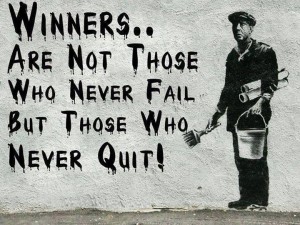Category Archives: Grade 8
16 Personality Types
Writing Revisited: Blending Quotations
If you were absent on Tuesday, February 25th, then you need to watch the following video and take notes. Place these notes in the writing section of your binder. This is an extension of the notes on “Integrating Quotations” that were given on Monday.
Once you’ve completed this task, you will need to revisit your IW prompt about the theme of “To an Athlete Dying Young”. Practice the different ways of blending quotations by rewriting the answer to the IW prompt. You will have a separately written answer for each of the methods.
Blending Quotations:
CoMC and Philosophy Study
| Enlightenment | What is the main idea of this text as it relates to the philosophy? | What quotations in the text support, highlight, or lead to the main idea? | What and where are the connections to the CoMC? How do the characters, plot, and/or theme reflect this philosophy? |
| Kant | What is the main idea of this text as it relates to the philosophy? | What quotations in the text support, highlight, or lead to the main idea? | What and where are the connections to the CoMC? How do the characters, plot, and/or theme reflect this philosophy? |
| Romanticism | What is the main idea of this text as it relates to the philosophy? | What quotations in the text support, highlight, or lead to the main idea? | What and where are the connections to the CoMC? How do the characters, plot, and/or theme reflect this philosophy? |
Why Mentoring Matters
Mentors,
I’m thankful for you and the time and committment you are giving to mentor our younger G/T students. Read more of the impact that mentoring can have here: http://educationaladvancement.wordpress.com/2013/01/08/mentorship-and-gifted-youth/
Thanks,
Ms. C
Rising Freshmen Night @Heritage HS
As you know Monday January 27, is Rising Freshmen Night here at Heritage High School. This is an opportunity for you to talk to students about our academic programs, extra-curricular activities, clubs and organizations, etc. We want to make sure that students get to know us and the great things that are happening throughout the school.
Types of plagiarism
Submitting someone else’s work as your own.
1. turning in a paper acquired online regardless of whether is
free or purchased.
2. downloading an article or portion of an article and submitting it as your own.
3. submitting another student’s work as your own.
Copy and paste.
This form of plagiarism is very popular because students seem to feel that if they use several different sources for their copying, they are less likely to be caught.
Not citing a source.
Any ideas or material you use from another source must be documented or cited. This includes summaries written in your own words. If the ideas are not yours, you must cite the source(s).
Neglecting required quotation marks.
Any time you use the exact wording from a source, you must include quotation marks around the phrase, sentence, or paragraph. For longer quotations [called block quotes], special spacing is used in place of the quotation marks.
Borrowed or not?
Sometimes in the note taking process, a writer will forget to indicate what the origin of an idea is. Perhaps this is because the idea from the source is close to the writer’s own ideas. You must give credit for ideas borrowed from your sources.
OTHER ERRORS AND ABUSE OF SOURCES.
Inaccuracy
Inaccurate paraphrasing of source material can be a major problem especially for inexperienced researchers. Be certain that your paraphrase accurately reflects what the original source means. Another error is the misapplication of quotations. This error may be caused by the researcher not understanding the material in the source, or by “forcing” a quotation in a paper where is does not fit.
Taking material out of context
People in the political arena are particularly bad about using this “technique.” When you take an idea, phrase, or quotation out of its original context [the surrounding words that give meaning to the idea] and place it into you work, you may change the meaning of the original.
Overuse of sources.
1. Stringing together quotations and / or ideas from your sources produces very poor papers. In fact you will usually fail a paper put together this way because you really haven’t written much yourself.
2. When you rely on too few sources or depend on a single source for the bulk of the information in your paper, you really haven’t done much in the way of research.
“Plunking”* source material.
Dropping source material [especially quotations] into your paper without comment or without preparing your reader produces choppy, sloppy writing. It also increases the chances that you will plagiarize inadvertently.
* The term plunking comes from the following source:
VanderMey, Randall et. al. The College Writer. Boston: Houghton Mifflin Company. 2004
Broad citations.
Citations should appear as near to the cited material as possible. In other words, don’t place a citation at the end of a paragraph [or string of sentences] unless the reference is only for that last sentence.
Remember
Unit 8C: Independent Reading
Angela Lee Duckworth: The Key to Success? Grit.
Perserverance. Growth Mindset.
After watching this, what are your thoughts on what the speaker has to say? Leave your comments and questions below.
Take the Grit Scale.

